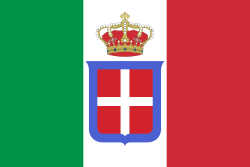Stodenní ofenzíva
| Stodenní ofenzíva | |||
|---|---|---|---|
| konflikt: První světová válka, západní fronta | |||
 Postup Dohody během Stodenní ofenzívy | |||
| Trvání | 8. srpna – 11. listopadu 1918 | ||
| Místo | Pikardie, Belgie | ||
| Souřadnice | 50° s. š., 3° v. d. | ||
| Výsledek | drtivé vítězství Dohody
| ||
| Strany | |||
| Velitelé | |||
| Některá data mohou pocházet z datové položky. | |||
Stodenní ofenzíva (německy Hunderttageoffensive, anglicky Hundred Days Offensive, francouzsky Offensive des Cent-Jours) byla sérií velkých ofenzív států Dohody na západní frontě probíhajících od 8. srpna 1918 až do konce první světové války. Za počátek Stodenní ofenzívy je pokládána bitva u Amiens, v níž se Britům 8. až 12. srpna podařilo prolomit německé linie, načež Dohoda vytlačila Centrální mocnosti z pozic, které dobyly během jarní ofenzívy. Erich Ludendorff po zprávách o této porážce nazval 8. srpen černým dnem německé armády.[1] Němci se stáhli na Hindenburgovu linii, kterou však vojska Dohody rovněž prolomila. V důsledku postupující ofenzívy Dohody a revoluci, jež vypukla ve vyčerpaném německém zázemí, došlo ke zhroucení Německého císařství. Zástupci Německa podepsali se státy Dohody příměří z Compiègne, které vstoupilo v platnost 11. listopadu v 11 hodin, čímž byly boje první světové války ukončeny.
Galerie
- Obraz 8th August, 1918 australského malíře Willa Longstaffa
- Americké jednotky během bojů meusko-argonnské ofenzívy
- Američtí vojáci během bitvy u Saint-Quentin, 29. září 1918
- Kanadské jednotky v ulicích Mons, 11. listopad 1918
Odkazy
Reference
Literatura
- KEEGAN, John. První světová válka. Praha ; Plzeň: Beta-Dobrovský ; Ševčík, 2002. 383 s. ISBN 80-7306-062-0.
- WESTWELL, Ian. První světová válka den po dni. Praha: Columbus, 2004. 192 s. ISBN 80-7249-194-6.
Externí odkazy
 Obrázky, zvuky či videa k tématu Stodenní ofenzíva na Wikimedia Commons
Obrázky, zvuky či videa k tématu Stodenní ofenzíva na Wikimedia Commons
Média použitá na této stránce
This is the national flag of Belgium, according to the Official Guide to Belgian Protocol. It has a 13:15 aspect ratio, though it is rarely seen in this ratio.
Its colours are defined as Pantone black, Pantone yellow 115, and Pantone red 032; also given as CMYK 0,0,0,100; 0,8.5,79,0; and 0,94,87,0.Autor: Fornax, Licence: CC BY-SA 3.0
South African Red Ensign from 1912 until 1951.
Flag of Australia, when congruence with this colour chart is required (i.e. when a "less bright" version is needed).
See Flag of Australia.svg for main file information.Autor: F l a n k e r, Licence: CC BY-SA 2.5
Při zobrazení tohoto souboru lze snadno přidat orámování
Flag of Portugal, created by Columbano Bordalo Pinheiro (1857-1929), officially adopted by Portuguese government in June 30th 1911 (in use since about November 1910).
Flag of the Germans(1866-1871)
Flag of the Germans(1866-1871)
Autor: Dragovit (of the collage), Licence: CC BY-SA 4.0
Both national flags of Austro-Hungary, the collage of flags of the Cisleithania (Habsburg Monarchy) and the Transleithania (Kingdom of Hungary)
The Hundred Days Offensive, August-november 1918
Battle of the St Quentin Canal (Saint-Quentin). Men of the American 30th Infantry Division at rest with German prisoners following the capture of Bellicourt, 29th September 1918. In the background are British Mark V Tanks with 'cribs' of the 8th Battalion, Tank Corps, which were one of four battalions of the V Tank Brigade allotted to the 5th Australian Division and American Corps for the operation.
Photograph of Canadian troops marching through the streets of Mons on the morning of 11 November 1918
Autor: Fornax, Licence: CC BY-SA 3.0
South African Red Ensign from 1912 until 1951.
The Hundred Days Offensive, August-november 1918
A crowd of German prisoners taken by the British Fourth Army in the Battle of Amiens. Near Abbeville, 27 August 1918.
Canadian troops in the vicinity of Arras, along Arras-Cambrai road in September, 1918. Description at National Archives Canada says: "Canadian troops take cover in a ditch alongside the road from Arras to Cambrai. They faced a series of well-protected enemy defences whose efficiency was enhanced by the region’s topographical features. On their left ran the Scarpe River." In the background a Renault FT light tank can be seen.
8th August, 1918 (oil-on-linen, 107 cm x 274 cm, 1918-1919) by Will Longstaff, Australian official war artist. Depicts a scene during the Battle of Amiens. The view is towards the west, looking back towards Amiens. A column of German prisoners of war being led into captivity. Meanwhile horse-drawn artillery are advancing to the east.
Gun crew from Regimental Headquarters Company, 23rd Infantry, firing 37mm gun during an advance against German entrenched positions. , 1918
























